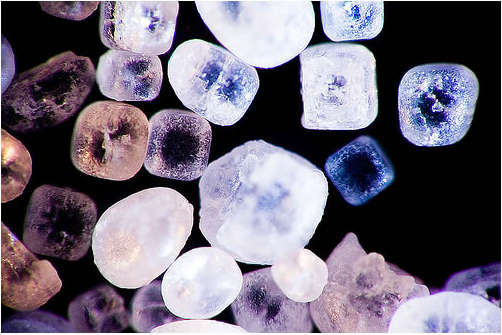FWP:
SETS == A,B; REPETITION
GATHERINGS: {6,3}
For background see S. R. Faruqi's choices. For more on Ghalib's unpublished verses, see the discussion in {4,8x}.
The first line has a favorite Ghalibian inshaa))iyah structure, in the form of a question (compare {1,1}). Some festive gathering is attracting attention, for its tumult, its clamor, its liveliness-- which in turn is generated by the 'presentation (or depth) of wounds' in the gathering. We know all this; all we need to ask is which gathering is the center of the buzz, whose salon is the place to be.
As so often, the second line doesn't answer the question, but offers a flat assertion of its own. If we follow Gyan Chand and read .sub;h as a noun, this gives the second line the structure 'A, B, C, is': the 'dawn', the 'gathering of salt', and the 'profit of an extinguished lamp' have to be placed in some kind of apposition ('A is B and C', or 'A is B, and this combination is C', or whatever). Gyan Chand maintains that the line is really about the killed lamp: what it gains is the 'dawn', which is 'a whole gathering of salt'. Another, and more convenient, reading would be to take .sub;h as adverbial, 'at dawn', and say that that's the time when the 'killed lamp' reaps its profit of the whole gathering of salt.
Either way, the whiteness of the dawn light (on the 'crack of dawn' see {67,1}) provides the 'killed lamp' with a whole horizon of salt; and of course, dawn is proverbially the time when the lamp that has burned throughout the night is 'killed' either by being extinguished (because its light is no longer needed for vision, and because the party is over) or by its own night-long burning (it uses up its oil and flickers out). The 'killed' lamp has died of its 'wounds', including grief at the breaking-up of the gathering (compare {169,12}).
Is access to all this salt really a 'profit' to the dead lamp? The line might be read sarcastically (that's all it gets for its trouble and suffering!), but of course, the lamp may well burn, like a lover, with its own flame, and may thus delight in having ample supplies of salt to enhance the fiery wounds of passion (if, that is, the lamp can still use the salt after it has been 'killed'). The connection between wounds and salt is a well-established one; for discussion and examples, see {77,1}.
It's striking that bazm occurs in both lines. Obviously this is deliberate, since it would have been easy to frame a second line that didn't include it; thus it can't be some kind of culpable 'padding' (see {17,9} for discussion of this concept). Instead, what we see in the second line is yak-bazm used as a kind of measuring-scoop, 'a whole gathering-ful' of salt. For discussion of this Persian idiomatic structure (of which the young Ghalib was very fond), see {11,1}. This double usage is enjoyable because of the various senses of bazm as a gathering (a collection of many parts), a party (for pleasure), and a feast (involving food, and spices like salt). By pointedly using bazm in each line, Ghalib has almost commanded us not only to read each occurrence differently, but also to reflect on the different senses of bazm and the other images that the verse invokes.
For the verse offers several interrelated patterns of imagery. There's food: a bazm can be a 'feast'; shor can mean 'bitter, salty'; while namak means 'salt'. There's also the connection of 'bitter, salty', 'salt', and 'wounds'. Then there's the link between the 'wounds' and the 'killed' lamp; and that between the whiteness of 'dawn' and the whiteness of 'salt'. And there's a kind of romantic set as well: shor can mean 'renown' (in the sense of public discussion), ((ar.z can mean a formal 'presentation', a bazm is an elegant gathering, and namak can mean, metaphorically, 'piquancy, spiciness, beauty'.

Asi:
There's no telling, about the wounds-chamber of the manifestation and presentation of which gathering, clamor is being raised in the world. For the dawn too seems to be a salt-profiting wound; and this wound is of that lamp that has been extinguished. This is with regard to the crack, that dawn is like a wound; and with regard to whiteness, the wound has been given the simile of salt-profiting.
== Asi, p. 229